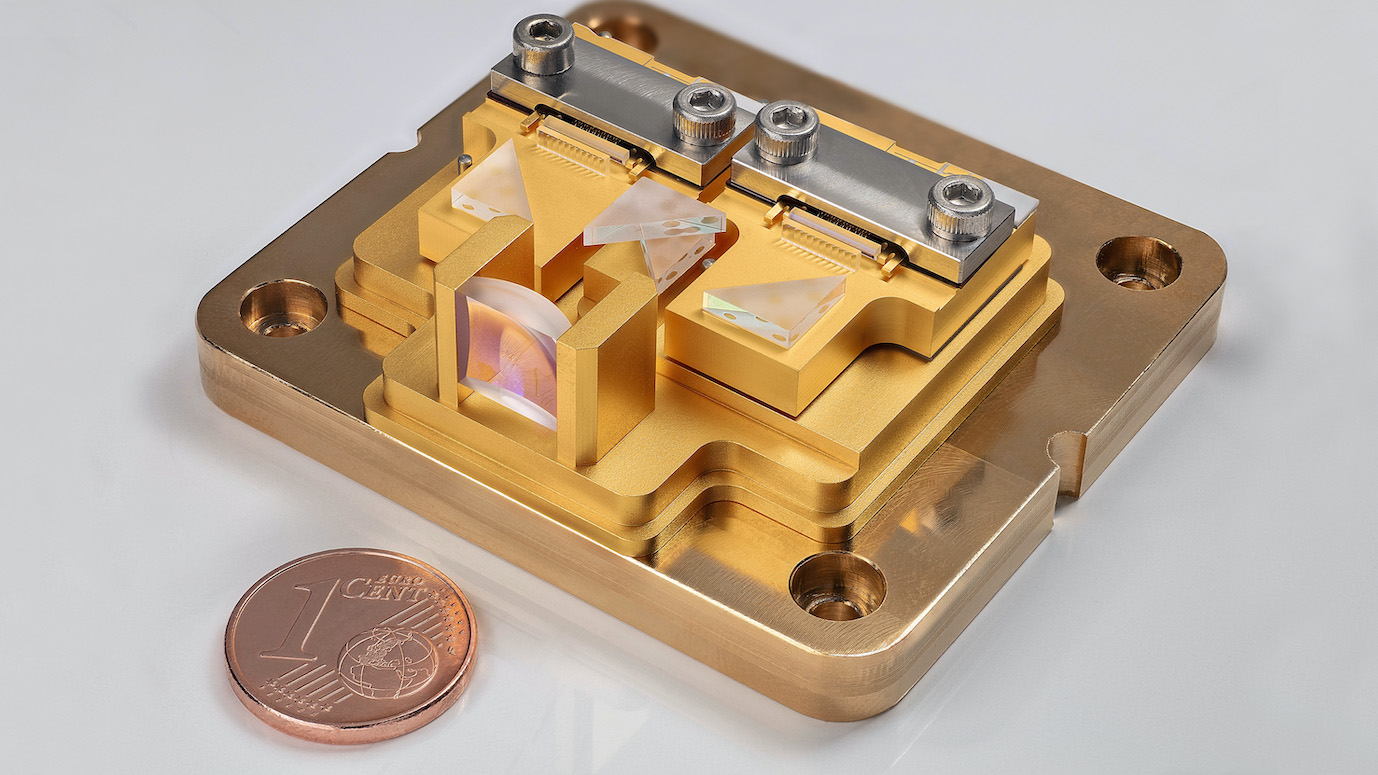FBH to show semiconductors for space and quantum tech

Ferdinand-Braun-Institut to present space-qualified, ultra-narrow linewidth diode laser modules and other compenents at Space Tech Expo Europe in Bremen November 16th to 19th
From November 16-19, 2021, the Ferdinand-Braun-Institut, Leibniz-Institut für Höchstfrequenztechnik (FBH) will be at the Space Tech Expo Europe in Bremen, Germany.
FBH has long-term experience in the development and fabrication of robust, compact diode laser modules for sophisticated space applications. These modules have already proven their capability several times in experiments under zero gravity conditions.
FBH is currently manufacturing 55 ultra-narrow line-width laser modules developed for the BECCAL (Bose-Einstein Condensate – Cold Atom Laboratory) apparatus. As of 2024, they will be used in the research facility operated by the German Aerospace Center DLR and the NASA for quantum optical experiments with ultra-cold atoms on board the International Space Station ISS. The facility will be used to investigate fundamental physics questions involving quantum objects with high precision near absolute temperature zero (-273.15degC).
The core elements of these and previous diode laser modules are laser diodes developed by the FBH, which are assembled together with optics and other passive elements with maximum stability and precision. Thanks to FBH's unique micro-integration technology, the modules are extremely robust and ideally suited for use in space. They feature small dimensions of only 125 x 75 x 23 mm³, a low mass (750 g) and excellent performance parameters: Output powers > 500 mW with simultaneously narrow intrinsic linewidth < 1 kHz are achieved.
In close collaboration with Humboldt-Universität zu Berlin, such modules are also being built into compact quantum sensors and optical clocks for use in space and for industry-compatible system solutions in quantum technology. The collaborative Joint Lab presents a novel, fully autonomous frequency-stabilised laser source with integrated DFB laser diode based on the D2 transition in rubidium, operating at 780 nm.
Laser modules for satellites: from communications to climate protection
FBH is also developing a range of laser modules for satellite applications. The institute's laser diode benches (LDB) have been used successfully for many years as pump lasers in Tesat-Spacecom’s laser communication terminals (LCT). They are used, among other things, to transmit high volumes of earth observation data particularly quickly between satellites and to earth. The LDBs are developed and qualified according to the standards of the European Space Agency (ESA) for space applications.
Their wavelength is stabilised to the pump transition band of a Nd:YAG laser such that the pump laser beam ensures stable LCT performance. On top of that, the pump laser features excellent reliability over the entire 15-year lifetime of the mission.
FBH will also show a DBR laser array module that offers both low noise and high reliability thanks to an integrated Bragg reflector, stabilising the wavelength on chip level. The suitability of such modules has been demonstrated for continuous operation of more than 15 years, thus qualifying them as flight hardware for the next LCT space missions. Another pump laser is to be used in the future on the MERLIN climate satellite, which is to measure the methane concentration in the atmosphere.
For this purpose, FBH has developed, qualified and delivered laser modules, each equipped with two high-power laser half-bars. These modules deliver 130 W pulsed emission at 808 nm wavelength and pump a Nd:YAG laser. Performance and reliability over the mission lifetime have been demonstrated through extensive qualifications of the technology, according to FBH and independently confirmed by ESA's Technology Center ESTEC. Thus, even with a long operational lifetime of more than four billion pulses, the performance degrades only insignificantly.
Energy-efficient components for satellite communications and sensors
Due to their high radiation hardness and capability of switching at high frequencies, GaN switching transistors are particularly suitable for power conditioning in satellites. FBH’s new developed 10 A/400 V AlN power core with GaN power transistors in a half-bridge configuration minimises parasitic inductances and capacitances of the switching cell.
Power switch, gate driver and DC link capacitors are hetero-integrated in an extremely compact manner, and heat is efficiently dissipated through the aluminum nitride substrate. In this way, the switching times of the power cell could be halved compared to a traditional design with discrete devices. High switching frequencies combined with high converter efficiency are the prerequisite for power converters with particularly high power density. A decisive advantage, since weight is key in space.


































